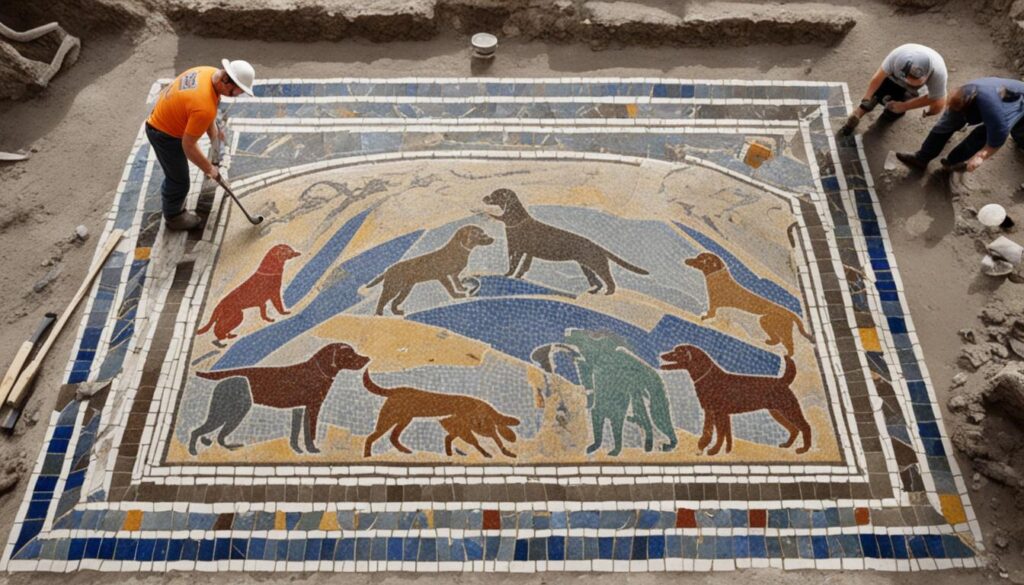Step back in time to ancient Pompeii, where a remarkable mosaic greets visitors with a timeless warning. The House of the Tragic Poet, a medium-sized dwelling near the Forum baths, holds a fascinating piece of Pompeii archeology. In its vestibule lies a striking example of ancient Roman mosaics – the famous “Cave Canem” or “Beware of the Dog” mosaic.
This mosaic dates back to the 2nd century BC. It shows a growling canine with the Latin phrase “cave canem” beneath it. The mosaic is a testament to the enduring nature of home security concerns and the artistry of Roman craftsmen.
As we explore this ancient masterpiece, we’ll uncover the rich history and cultural significance behind it. This mosaic is a unique find that tells us about ancient Roman life.
Key Takeaways
- The “Cave Canem” mosaic was discovered in Pompeii’s House of the Tragic Poet
- The mosaic dates back to the 2nd century BC
- “Cave Canem” translates to “Beware of the Dog” in Latin
- The mosaic depicts a growling dog with a warning message
- The House of the Tragic Poet features other well-preserved Roman artworks
- This ancient mosaic provides insights into Roman daily life and art
The Discovery of Pompeii’s Dog Warning Mosaic
In the world of Roman art, the “Cave Canem” mosaic is a standout. It was found during excavations in Pompeii, showing us a glimpse of life long ago. This mosaic was at the House of the Tragic Poet, a place caught in time by Mount Vesuvius’s eruption in 79 AD.

The House of the Tragic Poet is a key spot for preserving culture. It’s filled with beautiful frescoes and detailed mosaics. The dog warning mosaic is especially striking, with its clear images and warning message. The house also had a mosaic of a theater scene and paintings from the Iliad.
These artworks give us a peek into Roman life and art. Now, many of these treasures are in the National Archaeological Museum in Naples. They are kept safe for people in the future to learn from and enjoy.
Decoding the “Cave Canem” Message
The “Cave Canem” mosaic in Pompeii has sparked curiosity about its true meaning. In Classical antiquity, this Latin phrase was more than a simple warning. It had a complex role in ancient Roman culture, blending practical and symbolic purposes.
Guard dog symbolism was deeply rooted in Roman society. While “Cave Canem” might seem like a threat, scholars think it could have been a friendly warning about a beloved family pet. This shows the nuanced relationship Romans had with their dogs.
The phrase’s significance went beyond just household mosaics. It was also found in Roman literature, adding depth to its cultural impact. Interestingly, similar warnings about dogs appear in other ancient texts. For example, the Bible uses dog metaphors to warn against false teachings, similar to the protective symbolism found in early American culture.
By looking at these Latin inscriptions, we learn a lot about daily life in Pompeii. The “Cave Canem” mosaic acts as a window into Roman households. It shows the importance of pets and the clever use of language in ancient times.

Leave a Reply